The Hidden Realities Behind Balihara Ranch Kennel’s ‘Excellent’ Inspection II.part
In a world where the welfare of animals should be paramount, the practices at Balihara Ranch kennel reveal a stark and distressing reality. Despite the owner attempts to present a facade of excellence, the truth behind the scenes is far from acceptable. This article delves into the hidden aspects of the kennel’s operations, exposing the unethical practices that have long been suspected and highlighting why such actions are deeply troubling.
The Illusion of Excellence
The breeder recently bragged on Facebook about the good result of the veterinary inspection carried out in her kennel. In the article Behind the Facade: The Hidden Realities Behind Balihara Ranch Kennel’s ‘Excellent’ Inspection, we discussed the testimonial value of this record and the lenient legal regulations surrounding dog breeding in Slovakia. However, a closer examination of the inspection record reveals a different story. The breeder published only the first page of the record, but the second page—which contains the actual results of the inspection—remains partially hidden. Apparently, She did not realize that the other side of the document shone through the scan, making it partly readable when turned over.
Let’s see what the document reveals (important note: the six points below are exact quotations from the document of the veterinary inspection performed at Balihara Ranch kennel):
- At the time of the inspection, there were several dog breeds in the yard: Entlebucher Mountain Dog, Bernese Mountain Dog, Greater Swiss Mountain Dog, and terriers (note: Norfolk terriers).
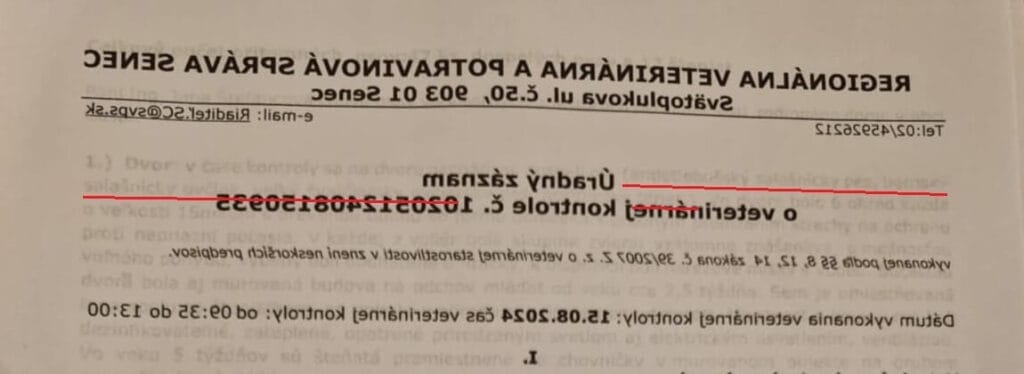
- There were six enclosures in the yard, each measuring 15 square meters. Each aviary contained a group of animals.
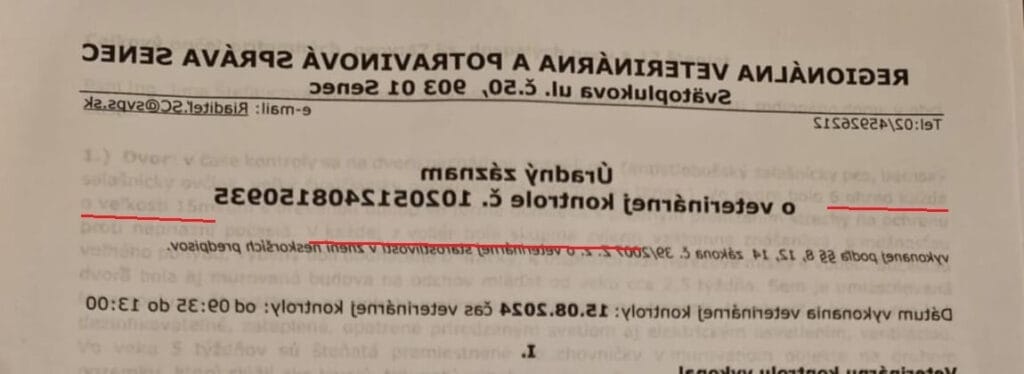
- The yard also included a brick building for raising puppies from around 2.5 weeks of age.
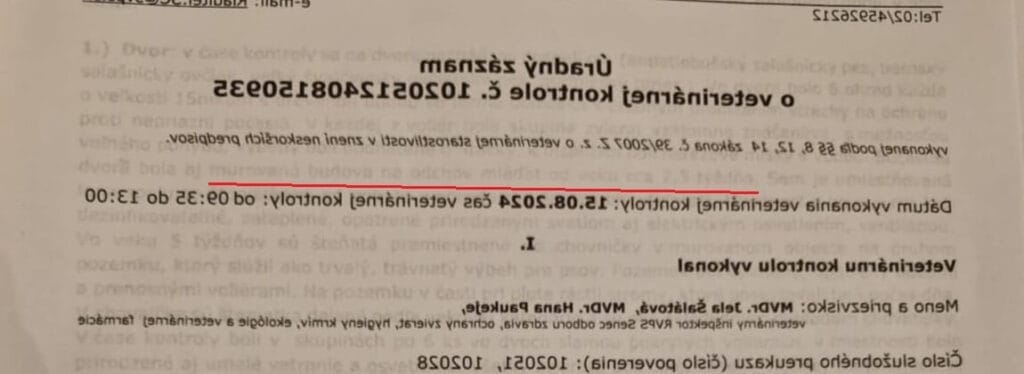
- At 5 weeks of age, the puppies are moved to a kennel in a brick building on another property. The inspectors state that there are several portable aviaries on the property.
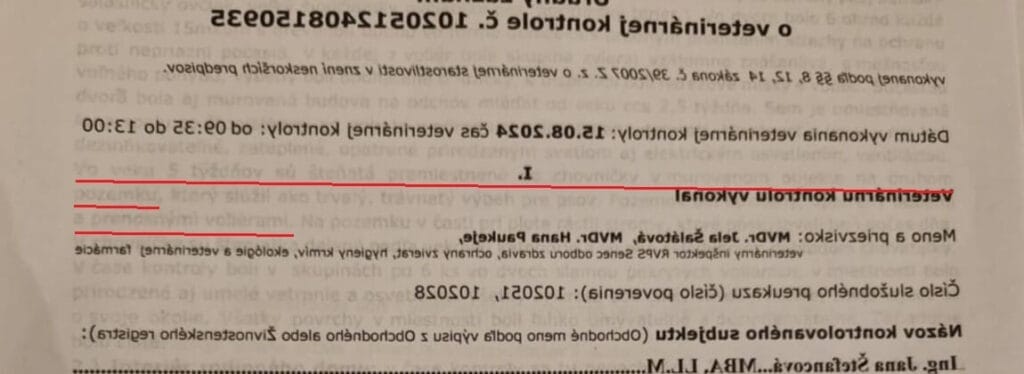
- At the time of inspection, they were dogs in groups of six in two straw-covered aviaries (note: likely puppies).
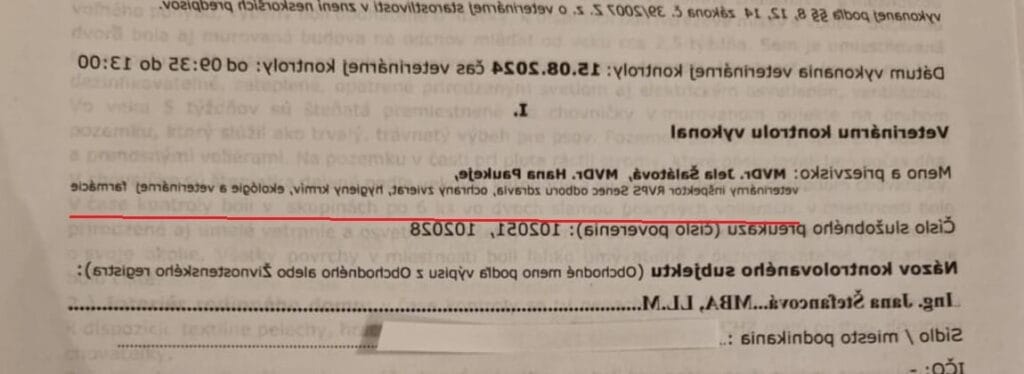
- Females unsuitable for breeding are spayed and then donated.
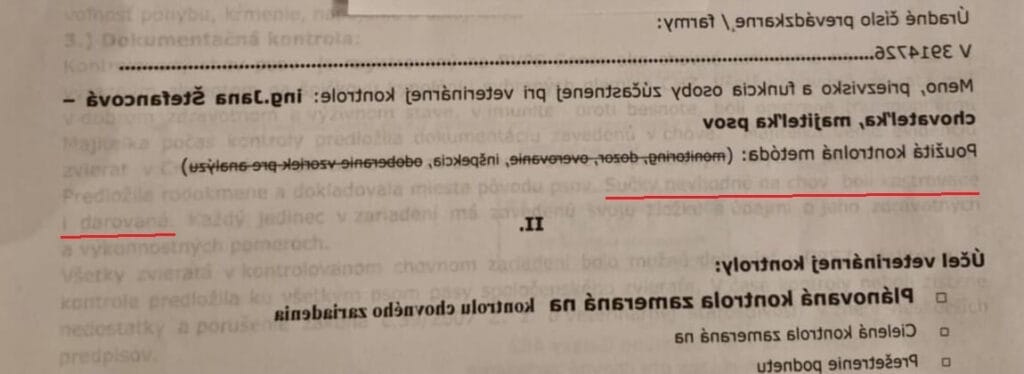
The official record further stated that the breeder has fulfilled the legal requirements and maintains documentation on the dogs.
The Hidden Truth of Balihara Ranch or How to Explain the Above Inspection Findings
So the inspection revealed that the kennel houses multiple breeds, including Entlebucher Mountain Dogs, Bernese Mountain Dogs, Greater Swiss Mountain Dogs, and Norfolk Terriers (we wonder about the whereabouts of the Appenzellers that recently had a litter at Balihara Ranch). In breeder´s yard, there were six enclosures, each measuring a mere 15 square meters, housing groups of animals. Additionally, a brick building was used for raising puppies from the tender age of 2.5 weeks. At 5 weeks, these puppies are moved to another kennel on a different property, where they are kept in groups of six in straw-covered aviaries.
Unethical Practices in Reality
- Multiple Breeds: The veterinary inspection confirmed that the breeder breeds multiple types of dogs, including all Swiss breeds and terriers. This practice is concerning because managing the health and well-being of several different breeds can be challenging. It often indicates a focus on quantity over quality, which is a hallmark of puppy mills and dog factories. These operations prioritize profit over the welfare of the animals, leading to poor living conditions, inadequate medical care, and unethical breeding practices.
- Dogs in Balihara Ranch in Confinement: The veterinary inspection confirmed that the owner of Balihara Ranch keeps dogs in very small aviaries. Each group of dogs is kept in enclosures of only 15 square meters, which is grossly inadequate for their well-being. In addition, in the blog article From Idyllic to Inhumane: Unmasking a Puppy Factory – The True Face of Balihara Ranch Kennel, we discussed the suspicion that dogs in Balihara Ranch are kept in kennels, based on satellite images, which are now unquestionably confirmed. We also estimated the approximate size of the kennels, noting that each group of dogs is kept in a 15 square meter area.
- Isolation During Critical Socialization Period: The veterinary inspection confirmed that the breeder moves the puppies to a brick building at just 2.5 weeks old, a crucial period for their socialization. During this time, puppies gradually start to see (at 2 weeks of age) and hear (at 3 weeks), and it is vital for them to interact with their environment. The most important period of socialization is likely the discovery phase between 3 and 5 weeks of age. During this period, when they begin to perceive the world, they are isolated in a separate building for raising puppies, as stated by the veterinary inspection, depriving them of essential socialization. It is hard to assume that puppies isolated from their home environment, locked in a closed building, can receive adequate care and socialization. However, the owner of Balihara Ranch tries to give the impression that the puppies are growing up in a home environment by creating many photos in front of a white cabinet in her house, where she takes them solely for the purpose of taking photos. The fear of the puppies is evident in the photos, showing that they are in an unfamiliar environment. With a clear conscience, she misleads future interested parties.
- Neglect of Socialization Needs: The veterinary inspection confirmed that the breeder moves 5-week-old puppies to another building (on another property!), where they remain until they are sold. The period up to 12 weeks is critical for their psychological development, yet the Balihara Ranch puppies are isolated from the outside world. This neglect leads to long-term damage to their character, resulting in shyness, insecurity, and fear, as evidenced by the behavior of many dogs from this kennel.
- Concerns Over Portable Aviaries: When veterinary inspectors state that there are several portable dog aviaries on the property, it suggests a lack of permanent, stable housing for the dogs. This is a red flag, indicating that the dogs might be subjected to frequent relocations and inadequate living conditions. Portable aviaries often lack the necessary space, comfort, and security that permanent structures provide, which can lead to stress and poor health for the animals. This setup is often associated with substandard breeding operations, where the welfare of the dogs is not a priority.
- Exploitation and Disposal of Breeding Females: The veterinary inspection at Balihara Ranch also revealed that females unsuitable for breeding are spayed and/or donated. This practice highlights the kennel’s exploitative nature, where dogs that have produced numerous litters and generated significant profit for the breeder are discarded once they are no longer useful. These dogs, like VOULES VOUZ from Balihara Ranch (see blog article The Pure Cruel and Disgusting Practices of Balihara Ranch Kennel: The Most Destitute Female in the kennel), are forced to adapt to new homes in their old age, a cruel fate for animals that have given to her so much.
The Call for Change
The practices at Balihara Ranch kennel are not just unethical; they are heartbreaking. The wner’s actions reflect a blatant disregard for the well-being of the animals in her care. It is imperative that we, as a society, recognize and condemn such practices. The welfare of these dogs should be our priority, and we must advocate for stricter regulations and enforcement to prevent such exploitation.
By shedding light on the hidden realities of Balihara Ranch, we hope to inspire action and change. These animals deserve better, and it is our responsibility to ensure they receive the care and respect they deserve. Let this article serve as a call to action, urging everyone to stand against unethical breeding practices and support the welfare of all animals.